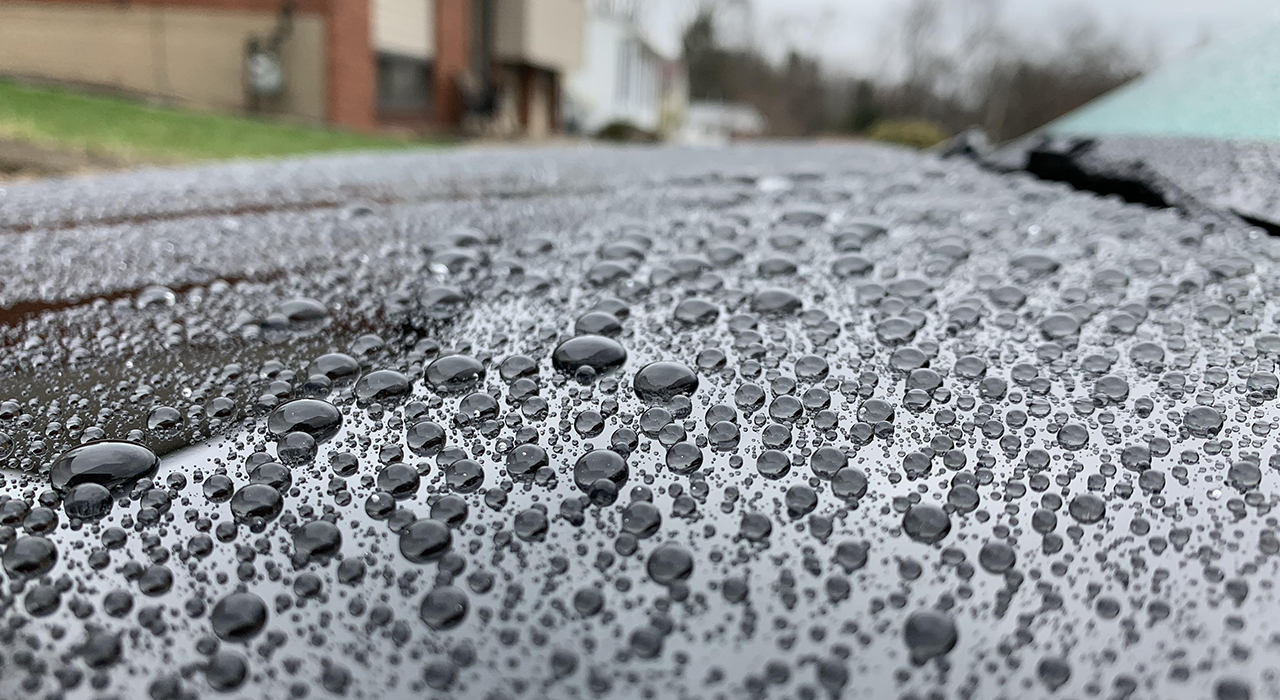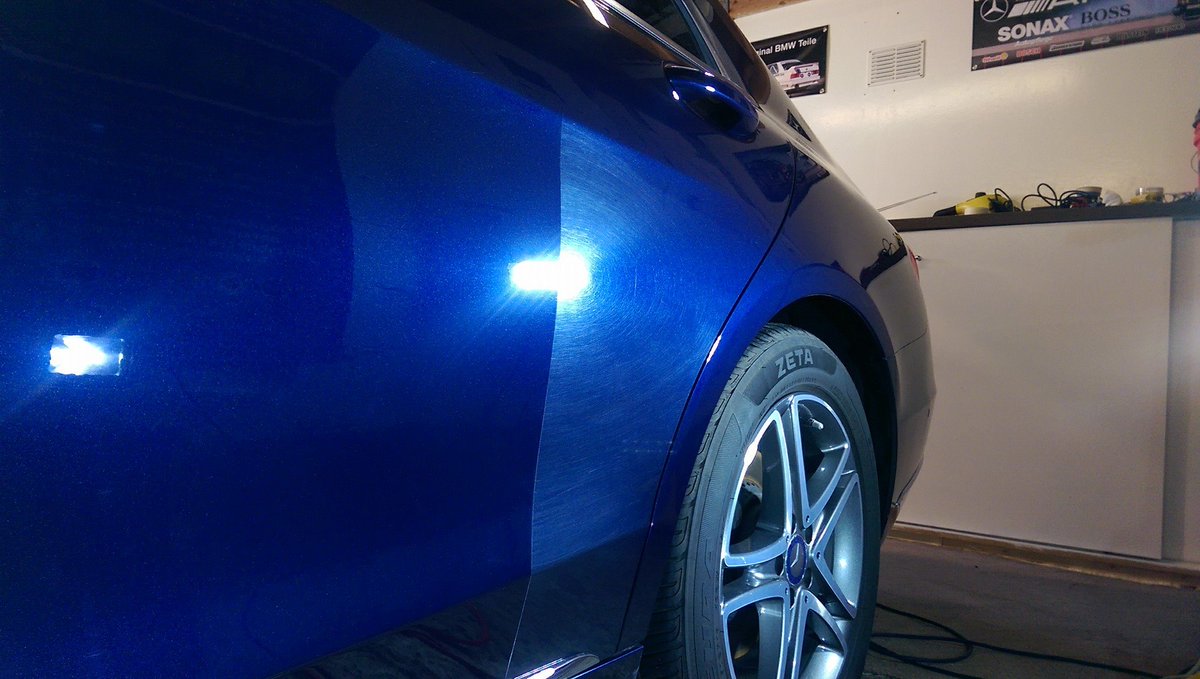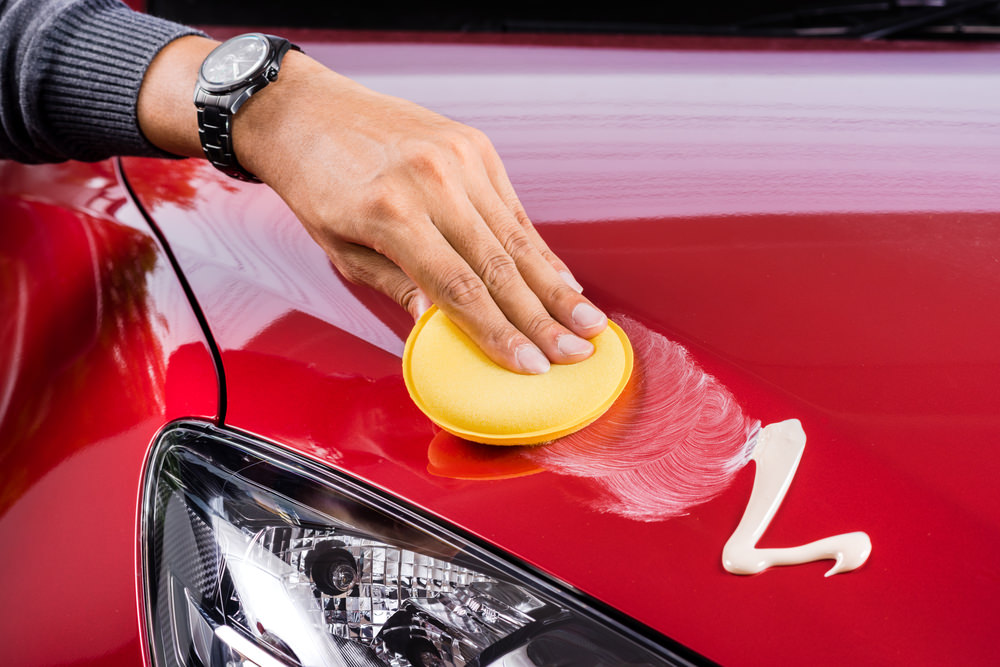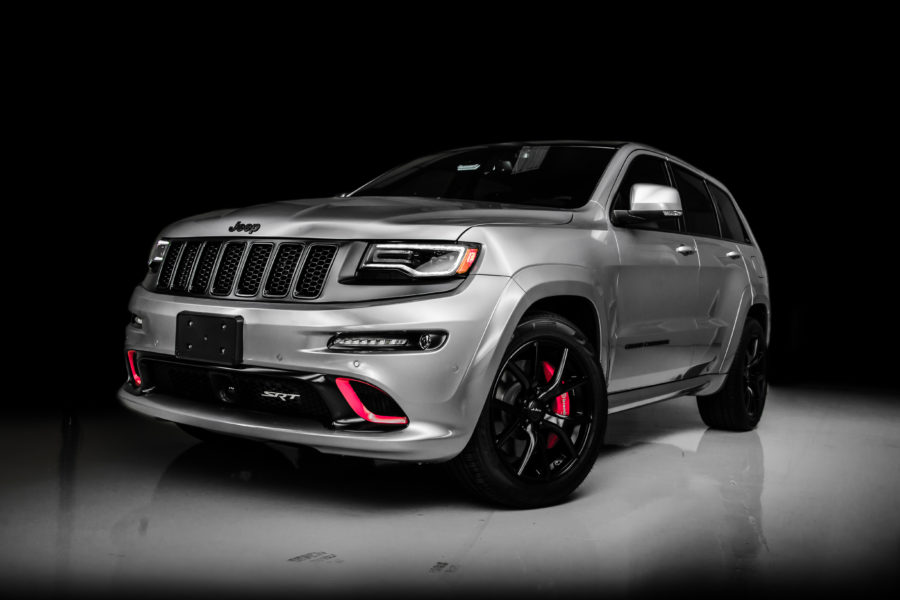Breaking Down the Facts About Ceramic Auto Wax
It seems every time you blink, there is a new ‘super ceramic coating’ introduced to the passionate car care enthusiast. The latest creation of chemists at direct manufacturers of car care solutions is ceramic car wax. Their intent was to infuse the hydrophobic properties found in ceramic coatings with the application found in regular wax.
The question most of us ask is whether they’ve succeeded? Well, the jury is still out. In fact, there are some car enthusiasts that have tried these hybrid spray wax products and experienced less-than-stellar results. However, that doesn’t mean that it’s not a good product or offers some added benefits that traditional carnauba wax does not.
So, what’s the truth about this new enhancement of traditional wax? How are these products different from a genuine nano ceramic coating? Is a ceramic wax better than natural carnauba wax or typical paint sealants? Is this product made to improve waxing your car? Or – should you avoid these products like the plague?
These are all questions we’ll explore in today’s CeramicPro.com blog.
What is Ceramic Wax for Cars?
Believe it or not, most ceramic wax products contain zero ‘natural wax’. They are mainly lab created polymer-based ingredients, sometimes infused with SiO2 or Teflon, which are “ceramic” by definition. These two ingredients help to produce a slippery surface or hydrophobic properties that nano ceramic coatings are primarily known.
The main problem with this product category is the lack of consistency between the formulations.
There are some products marketed as ceramic spray coatings, and others that are designed as paste wax. Some are infused with Silicon dioxide and others are simply chemical polymers that bond to clear coats. Regardless of their exact composition, it is safe to say that a ceramic wax is basically a paint sealant on acid that is applied to your clear coat.
This synthetic product can be applied like a traditional carnauba paste wax or sprayed on and wiped off. The manufacturers of these products recommend using a clay bar to remove surface contaminants prior to applying the wax. Some go as far as to recommend paint correction, as their ceramic wax coatings are filled with paint enhancing polymers that can improve the shine of paint underneath.

One of the best ways to see the difference between traditional carnauba wax vs ceramic car wax is shown above. On the left is a car with a single coat of traditional car wax. The right has a coat of a leading ceramic car wax.
Like boost sprays, a ceramic spray wax can be used on top of an existing nano coating or as a standalone product. In most cases, these formulations will provide about a year’s worth of hydrophobic properties, but simply do not cure as strong as a concentrated nano ceramic coating like Ceramic Pro 9H.
A ceramic paint coating in a wax form does not require a ton of surface prep. While it’s a good idea, they simply don’t amplify existing damage on a vehicle’s paintwork like a spray coating or nano coating will. They are also a bit easier to maintain – as you can take your car to the local car wash or use a waterless wash to keep it clean. It is always best to use a good microfiber towel to dry the vehicle with any paint coating.
Why Were Ceramic Waxes Made?
Making DIY products easier to use has been a focus for all businesses in the automotive industry for years. At its core, that’s the intent of a ceramic coating wax – but with a little spin. The truth is that the most consistent demographic of car care products over the past 20 years has been the Baby Boomer generation.
This is the group of car-nuts that grew up with traditional car wax – like Turtle Wax, Meguiar’s and others. As companies started to introduce professional-grade nano ceramic coatings, the in-house chemists and product development experts started to notice a sizable shift in the amount of business being lost.
A new crop of DIY ceramic coating kits also bit into the sales of established wax brands, but the Boomers simply didn’t buy into these watered-down coatings. They preferred the hand application and buffing associated with traditional car waxes. Thus – the ceramic car waxes were born to provide protection against UV rays for the car’s paint surface.
Are Ceramic Car Waxes Good?
Ceramic waxes are a great option for those traditional DIY car lovers who prefer hand applied paint protection solutions for their car paint. It’s better than traditional products, as the added infusion of silicon dioxide and lab-created synthetic paint sealants cures harder, lasts longer, and provides enhanced hydrophobic properties.
The run-of-the-mill natural carnauba wax has a life-expectancy of about three months. Synthetic paint sealants (in liquid form) can hold up for about 8 months. The ceramic waxes are marketed as an annual paint protection solution. However, this is where some confusion occurs.

The hydrophobic properties are the leading advantages of ceramic waxes vs paint sealants.
When most manufacturers talk about longevity with their paint protection products, it’s extremely vague. For example, a leading DIY ceramic coating brand advertises an ‘expected longevity of 2 to 3 years’, but they don’t really explain what longevity means.
Some people will judge the performance of paint protection wax, ceramic coat, or spray by the time it starts to lose some of its qualities – such as a loss of hydrophobic properties. Others judge longevity by the time they start to see faded paint. That’s ultimately the biggest issue we’ve got with ceramic car waxes in general. It’s just not known how long they will provide protection.
How is Ceramic Wax Different from Conventional Wax?
The main difference between these two products is hardness and hydrophobic. Most ceramic waxes are infused with ingredients that cure stronger than natural carnauba wax and synthetic paint sealants. As the wax hardens, it provides a flatter surface, which amplifies the water shedding or hydrophobic properties.
The ceramic waxes are also formulated to allow you to build layers over time. That’s one of the nice features of these products. With traditional car wax, you need to remove the old coatings before you apply a new layer. That’s a thing of the past with ceramic car waxes.
These new lab-created super waxes also offer superior protection against chemicals, both organic and non-organic. Bug splatters, bird droppings, tree sap, and other contaminants are less likely to penetrate the hard shell of protection vs traditional car wax. When using these ceramic wax products, washing your car is also easier.
Finally, conventional wax is separated into two categories – natural and synthetic. Ceramic car wax formulations are 100% synthetic and have no natural ingredients.
Is Ceramic Wax Better than Carnauba Wax?
Yes – if you’re a lover of the wax on wax off method of paint protection – a ceramic wax is a far better alternative to the traditional carnauba wax. It’s designed to apply easier, remove easier, can be layered with each application, and simply lasts longer. It gives your paint an added boost of luster and shine – at a depth that is superior to normal wax.
What’s the Best Ceramic Wax for Cars?
That’s difficult for us to answer. It really depends on your preferences. There are some ceramic wax products that are easier to apply – such as the spray-on hybrid ceramic wax products by Meguiar’s hybrid ceramic wax for example. They can be applied on top of you’re average DIY ceramic coating or used as a standalone solution, hold up for about 6 months, and can be layered on top of each coat.
If you’re looking for a traditional paste wax ceramic-infused solution, DP’s Not Your Father’s ceramic wax tends to be a leader among those who prefer these products. There are some great online forum debates and ceramic wax product reviews that will provide an unbiased review that we’d recommend reading.
Which Prevents Swirl Marks Better – Ceramic Wax or Ceramic Coating?
While a ceramic car wax is good at providing added protection, it simply doesn’t hold a candle to a professional 9H ceramic coating. The strongest ceramic wax is comprised of about 30 percent SiO2 or silicon dioxide. It’s often assumed that this is the ingredient in ceramic coatings that produces the hardness pro-grade formulations are known to produce. But that’s inaccurate.

This is a classic example of a car that has suffered from severe swirl marks. The solution is to complete paint correction. The way to avoid it is to use a professional grade nano ceramic coating. While a ceramic wax will help, it’s not as strong as the Ceramic Pro 9H coating.
Titanium dioxide or TiO2 is the main contributor to the hardness of a ceramic coating product. SiO2 helps maintain a flat surface, which makes the top coat slippery. That’s the attribute most people associate with ceramic paint protection products. But, regardless, the percentage of SiO2 and TiO2 in a ceramic wax pales in comparison with their nano-technology infused older and more mature cousins.
The general rule of paint protection – and reducing the potential of swirl marks, is the stronger or harder the top layer, the less likely scratches will occur. The clear advantage goes to a genuine nano ceramic coating. Ceramic wax doesn’t come close in this matter.
Why a 9H Nano Ceramic Coating is the Ultimate Protection
Let’s face it – even the best ceramic wax can’t stand on the same platform as a professional-grade nano ceramic coating like Ceramic Pro 9H. It’s simply not a fair comparison. The ceramic wax is a genuine starting point for those who prefer applying wax onto their car the old fashion way. As a Gen X car guy – I appreciate that – and know there is a passionate consumer market that loves it as well.
I also understand – as a guy who is not getting any younger, that spending hours outside on a Saturday morning waxing my car could be spent golfing, swimming, playing poker, or spending time with family. This is just one of the reasons why upgrading to the lifetime protection of a Ceramic Pro 9H Gold Package to keep my valued ride cleaner longer, with superior hydrophobic properties, and producing a deep, rich, high gloss shine simply makes sense.
By having a professional auto salon handle all the prep work, apply the coatings, and inspect it annually, mistakes in application are a thing of the past. Maintenance car washes are easier, you’ll spend less money on protection products in the long-term, and the factory shine will be maintained for years.
If you’d like to dump the traditional or ceramic car wax applications and elevate your paint protection to the highest level with a coating, click the link below to explore your options with Ceramic Pro 9H and request a free estimate.





